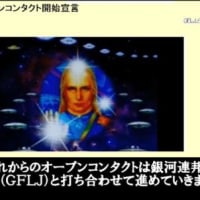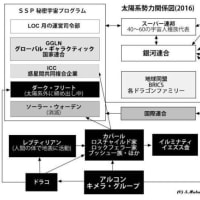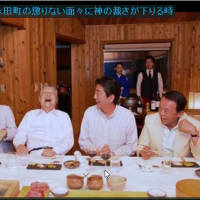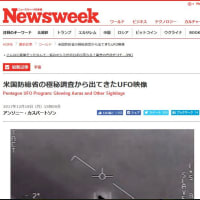Japanese society Italy debated their
origins they still ask questions such as
who are we and where did they come from
a question that is asked in many
societies but when a large prehistoric
settlement was discovered in a moral
Prefecture in the far north of Honshu it
would change Japan as we know it it was
a story that would be found on every
newspaper in Japan the earliest artifact
that dated back from about , BCE
tools were discovered to scholars
thought dated back to an Old Stone Age
culture that spread from Northeast Asia
into Japanese suck sakeni on kimitaka
peninsula and even to north america
adorn the time these tools are
discovered scholars realized detour
these tools will possibly use during the
Old Stone Age these tools developed
pottery within the hunting and gathering
society neo mythical hunters and
gatherers created figures of clay these
pottery figures would be one of the
oldest in the world older than any
pottery in the Middle East the period
discipline the period this pottery came
from would be known as jomon period or
from the german society the reason why
would be called the jomon period is due
to the cord markings that characterized
the ceramics made during this time or
the rope-like chord patterns designed on
the pottery
this hollow figurine or doogal of a
female is representative of the type
found in Tohoku region is displayed at
the Metropolitan Museum but many of the
german pottery figures are displayed all
over the world there are party figures
that can be found at the British Museum
the unit the University of Art Museum
the Tokyo University of Arts and many
others but the main one in my opinion
would be the perpetual amore Museum of
Art the pottery figures that are
featured in these museums range from
sizes inches up to nearly two feet for
the larger Dougal this specific dogo
from the late to final jomon period is
six-and-a-half inches in height or
sixteen point five centimeters looking
at this pottery figure you can
immediately recognize those big coffee
bean shaped eyes it's almost has an
aenean like aspect to its design as well
the nose in the mall for just merely two
small holes and doing those eyes almost
look like goggles the true meaning of
this convention remains unknown while
other versions of the figures are more
complex and never really supposed to be
understood other pottery figures have
more complete examples of this type have
fleshy torsos with bare navels above
dick sturdy legs the emphasis on the
pointed breasts and generous hips of
these figures suggest that they function
as fertility symbols most of these
figures were seen as symbols with
recognizably human or animal features
they have a fascinating history in japan
dating back thousands of years Google
evolved within the earliest dated
continuous tradition of pottery
manufacturer in the world stretching
back to about , bc they were
produced by the German people
prehistoric foragers in the temperate
forests that covered the Japanese
acapella jam own people lived in tune
with the seasons and shattered and
shared their rich natural world with the
spirits since the Edo period
Dougal have been excavated from many
sites through throughout Japan the best
example is coming from central and
eastern regions from where most of the
current exhibits are drawn more than
, Dougal have been recovered from
each of the two major sites shokudo in
yamanashi prefecture in san e maria ma
in a morir prefecture mostly in
fragments nationwide the total reported
to date is about eighteen hundred
thousand the techniques used to make
such pottery were modeling clay
applicate marketed with twisted plant
fibers and varnishing the artistic and
high quality potteries are very unique
but what is what is a mystery is its use
there's a belief these Dougal were used
for the embodiment of spirits venerated
and revered sometimes buried with the
dead to guide them to the next world
sort of how the children's will put a
coin on the eyes or in the mouth of
deceased so they can pay the ferryman
Sharon to ferry them throughout done the
world River known as sticks but i did
bad i digress the debate between
japanese still continues the functions
of the Dougal are open for
interpretation to jack up the japanese
acapella during the jomon period was
occupied by a large number of different
groups of people or different societies
they probably spoke a number of
different dialects and express
themselves through a huge range of
pottery styles over local styles
have been recognized today ja mon people
lived in tune with their seasons and
shared a rich natural world with the
spirits the mystery of the german
pottery figures could be compared to the
mystery of the Easter Island heads
although the two are entirely different
objects they share similarities though
they
the Easter Island heads were said to
keep the evil spirits away from dead and
Dougal or said to be buried with the
dead one so they can be guided to the
next world creating a symbol meaning for
both of these objects especially when it
came to making sure the dead remained in
peace and even more interesting to bake
turning the German people is a theory or
scientific matter that links them to be
of Korean descent they have also been
studies of hybridization saying that
both yo-yo and Jomo engines have made a
contribution to contemporary gene pool
genetic studies have suggested
interbreeding between the yo-yo and your
own people with a gem own contribution
to modern Japanese being as much as
forty percent apparently a yo-yo
language prevailed along with the
agricultural technology researchers who
have studied German and yoyo cultures
came to the conclusion up to studying
various dialects of Japanese the
conclusion was all Japanese are
descended from a founding language taken
to the Japanese islands years ago
the finding sheds new light on the
origins of the Japanese people
suggestion that their language descended
from that of the rice-growing farmers
who arrived in Japan from the Korean
Peninsula and not from the
hunter-gatherers who first inhabited the
islands some , years ago in the
th century Dougal served as a potent
source of artistic inspiration and in
recent decades they have featured they
have been even been featured in manga
comics and PlayStation games it is
testimony to the power to do gold I can
that they can serve simultaneously as
symbols of prehistoric japan japan
entrancing works of art and protagonist
in contemporary culture here are my
citations now not all my citations are
here which is why i have a google doc
link in the bottom them I recommend you
go and check that out that's where all
my citations up are as well as the
lecture I just gave word for word most
of the citations are used we're mainly
for pictures
the main domain websites i use for my
research were the museum websites that i
provided here thank you and i hope you
enjoyed this lesson
・・・・・・・・・・・・・・・・・・・・・・・・・・・
https://docs.google.com/file/d/0B3ztV...
Dogu: Japans Mysterious Pottery Figures
Japanese society heatedly debate their origins, they still ask questions such as: Who are they and where did they come from? A question that is asked in many societies, but when a large prehistoric settlement was discovered in Aomori Prefecture in the far north of Honshu, it would change Japan as we know it. It was the story that would be found on every newspaper in japan, the earliest artifact that dated back from about 30,000 B.C.E. Tools were discovered, tools scholars thought dated back to an Old Stone Age (Craig). Culture that spread from northeast Asia into Japanese, Sakhalien, Kamchatka peninsula, and even to North America. During the time these tools were discovered, scholars realized these tools were possibly used during the Old Stone Age. These tools developed pottery within the hunting and gathering society. Neolithic hunters and gatherers created figures of clay (Ron). These pottery figures would be one of the oldest in the world, older than any pottery in the Middle East. The period this pottery came from would be known as the Jomon Period or from the Jomon Society. The reason why it would be called the Jomon period is due to the "cord markings that characterize the ceramics made during this time (JOM),” or the ropelike cord patterns designed on the pottery.
Part 2: This hollow figurine or dogu of a female is representative of the type found in the Tohoku region. It is displayed at the Metropolitan Museum, but many of the Jomon pottery figures are displayed all over the world. There are pottery figures that could be found at the British Museum, The University Art Museum, The Tokyo University of Arts and many others, but the main one in my opinion would be the prefectural Aomori Museum of Art. The pottery figures that are featured in these Museums range from sizes two inches up to nearly two feet for the larger dogu. This specific dogu from the Late to Final Jomon Period is 6 ½ inches in height or 16.5 centimeters (Bus). Looking at this pottery figure you can immediately recognize those big coffee bean shaped eyes it almost has an alien like aspect to its design as well. The nose and the mouth are just merely two small holes and dogu’s eyes almost look like goggles. The true meaning of this convention remains unknown, why the other versions of figures are more complex is never really supposed to be understood. Other pottery figures have more complete examples of this type have fleshy torsos with bare navels above thick, sturdy legs. The emphasis on the pointed breasts and generous hips of these figures suggests that they functioned as fertility symbols (Bus). Most of these figures were seen as symbols “with recognizably human or animal features, (sic) they have a fascinating history in Japan, dating back thousands of years (Pow).” Dogū evolved within the earliest dated continuous tradition of pottery manufacture in the world, stretching back to about 12,500 BC. They were produced by the Jōmon people, prehistoric foragers in the temperate forests that covered the Japanese archipelago. Jōmon people lived in tune with the seasons, and shared their rich natural world with the spirits. Since the Edo period (1615–1868) dogū have been excavated from many sites throughout Japan, the best examples coming from central and eastern regions -- from where most of the current exhibits are drawn.
Part 3: More than 1,000 dogū have been recovered from each of two major sites, Shakadō in Yamanashi prefecture and Sannai Maruyama in Aomori prefecture mostly in fragments. Nationwide, the total reported to date is about 18,000 (The). The techniques used to make such pottery were modelling, clay appliqué, marking with twisted plant fibres (jōmon means ‘cord-marked’) and burnishing. The artistic and high quality potteries are very unique, but what is a mystery is its use. There is a belief these dogu were used for the embodiment of spirits, venerated and revered; sometimes buried with the dead to guide them to the next world, sort of how the Trojans would put a coin on the eyes and mouth of the deceased, so they can pay their ferryman Charon to ferry them through the underworld river known as styx, but I digress. The debate between the Japanese still continues, the functions of the dogu are open for interpretation, “the Japanese archipelago during the Jomon period was occupied by a large number of different groups of people, or different societies. They probably spoke a number of different dialects and expressed themselves through a huge range of pottery styles - over 400 local styles have been recognized to date (Stone)."Jōmon people lived in tune with the seasons, and shared their rich natural world with the spirits (Pow). The mystery of the Jomon pottery figures could be compared to the mystery of the Easter Island heads. Although the two are entirely different objects they share some similarities.
Part 4:The Easter Island heads were said to keep evil spirits away from the dead and dogu’s were said to be buried with the dead so they can be guided to the next world creating a symbol or meaning for both of these objects especially when it came making sure the dead remained in peace. An even more interesting debate concerning the Jomon people is a theory or scientific matter that links them to be of Korean descent. There have also been studies of hybridization saying that both Yayoi and Jomon genes have made a contribution to the contemporary gene pool (Tra). Genetic studies have suggested interbreeding between the Yayoi and Jomon people, with the Jomon contribution to modern Japanese being as much as 40 percent. Apparently the Yayoi language prevailed, along with the agricultural technology (Wade). Researchers who have studied the Jomon and Yayoi cultures came to a conclusion after studying various dialects of Japanese. The conclusion was all Japanese are descended from a founding language taken to the Japanese islands 2,200 years ago. The finding sheds new light on the origin of the Japanese people, suggesting that their language is descended from that of the rice-growing farmers who arrived in Japan from the Korean Peninsula, and not from the hunter-gatherers who first inhabited the islands some 30,000 years ago (Wade). In the twentieth century, dogū served as a potent source of artistic inspiration, and in recent decades they have even featured in manga comics and Playstation games. It is testimony to the power of dogū that they can serve, simultaneously, as symbols of prehistoric Japan; entrancing works of art; and protagonists in contemporary culture (POW).
・・・・・・・・・・・・・・・・・・・・・・・・・・・



















